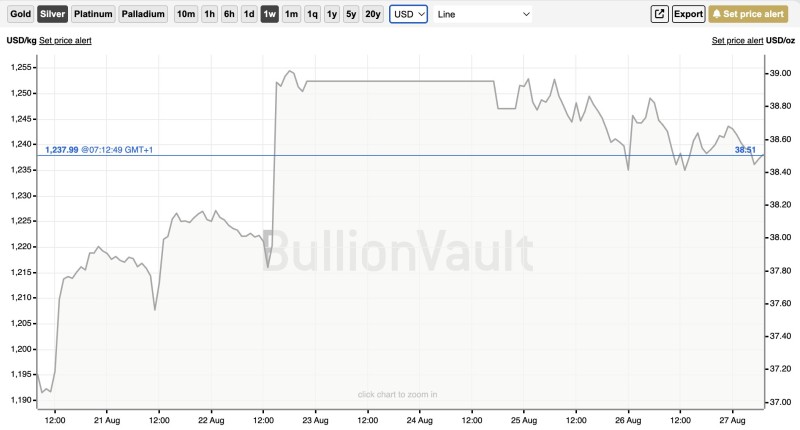Silver markets experienced familiar turbulence around the August 26 Comex options expiry, with prices consolidating near $38.51 after failing to sustain earlier momentum. The timing has once again sparked debate about whether expiry cycles are artificially constraining the precious metal's natural price movements, particularly as industrial demand continues to strain available supply.
Silver (XAG) Price Reaction to Comex Expiry
Silver hit a wall during last week's Comex options expiry after showing early strength. The metal quickly retreated to $38.51 per ounce and has been trading sideways ever since. This familiar pattern has traders questioning whether the timing is purely coincidental.
Market observer @Dioclet54046121 highlighted how silver appeared to face artificial resistance just as it was building upward momentum. Despite strong underlying demand from industrial users, the metal couldn't break through key resistance levels during the expiry window. This fits a pattern that many silver bulls find frustratingly predictable.

Unlike gold, silver serves dual roles as both a store of value and a critical industrial input. It's essential for solar panels, electric vehicles, and countless electronic components. When paper markets potentially distort pricing, it can ripple through entire supply chains.
The suppression allegations center on large players using futures contracts to cap prices during expiry periods, limiting payouts and discouraging investment flows into physical silver. When prices stagnate around $38.50 despite genuine supply tightness, it suggests the paper market might be overriding natural price discovery.
Silver (XAG) Price Outlook After Expiry
Technically, silver has support around $38.20 with resistance sitting at the $39-40 range. Breaking above that zone could trigger significant buying pressure heading into September.
The bigger picture remains bullish for silver. Expected Fed rate cuts and persistent inflation concerns typically benefit precious metals. The key question is whether silver can shake off expiry-related pressure and return to its fundamental uptrend.
For long-term buyers, these $38.50 levels might offer decent entry points, especially with green technology demand showing no signs of slowing down.
 Usman Salis
Usman Salis

 Usman Salis
Usman Salis


